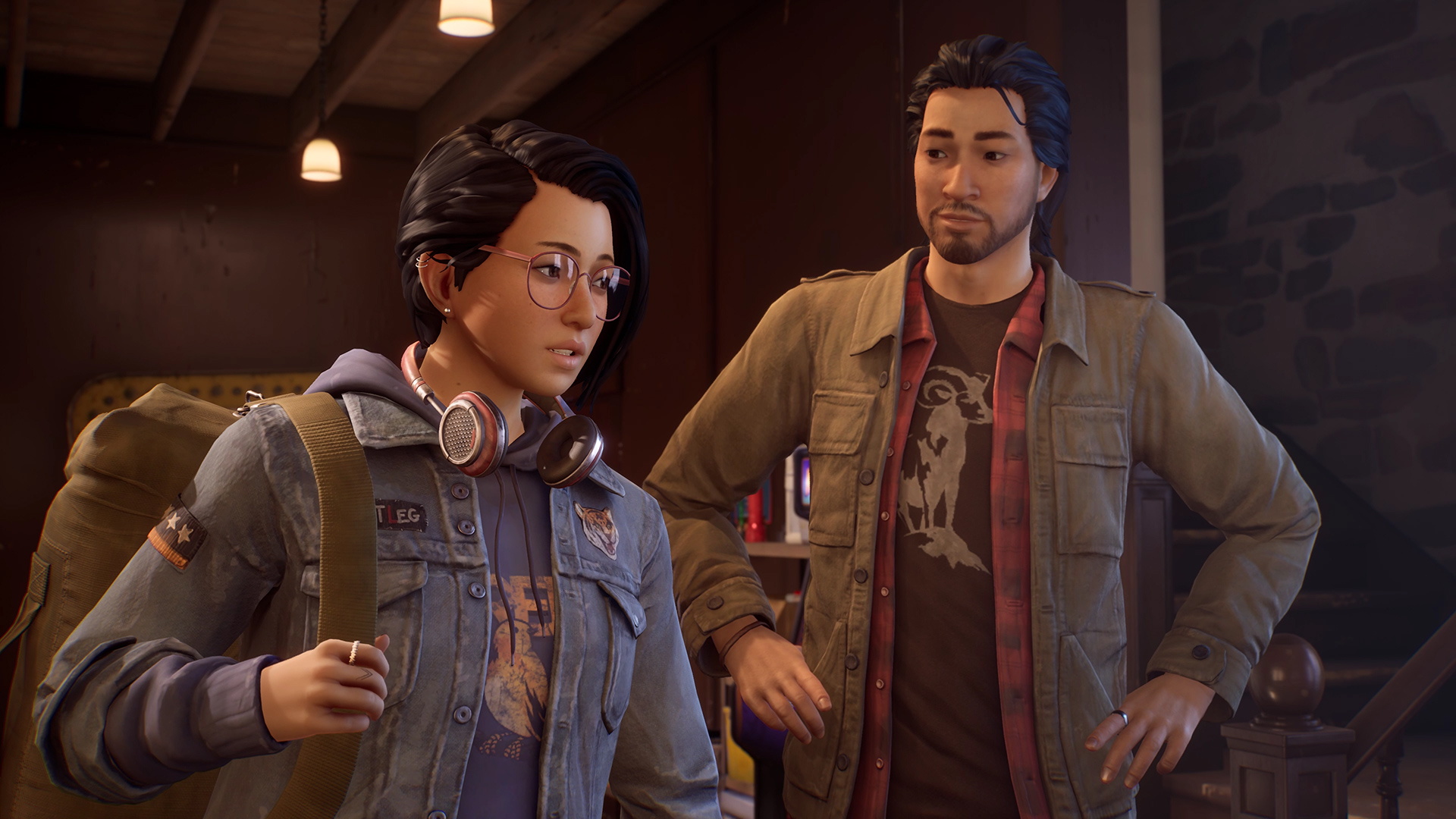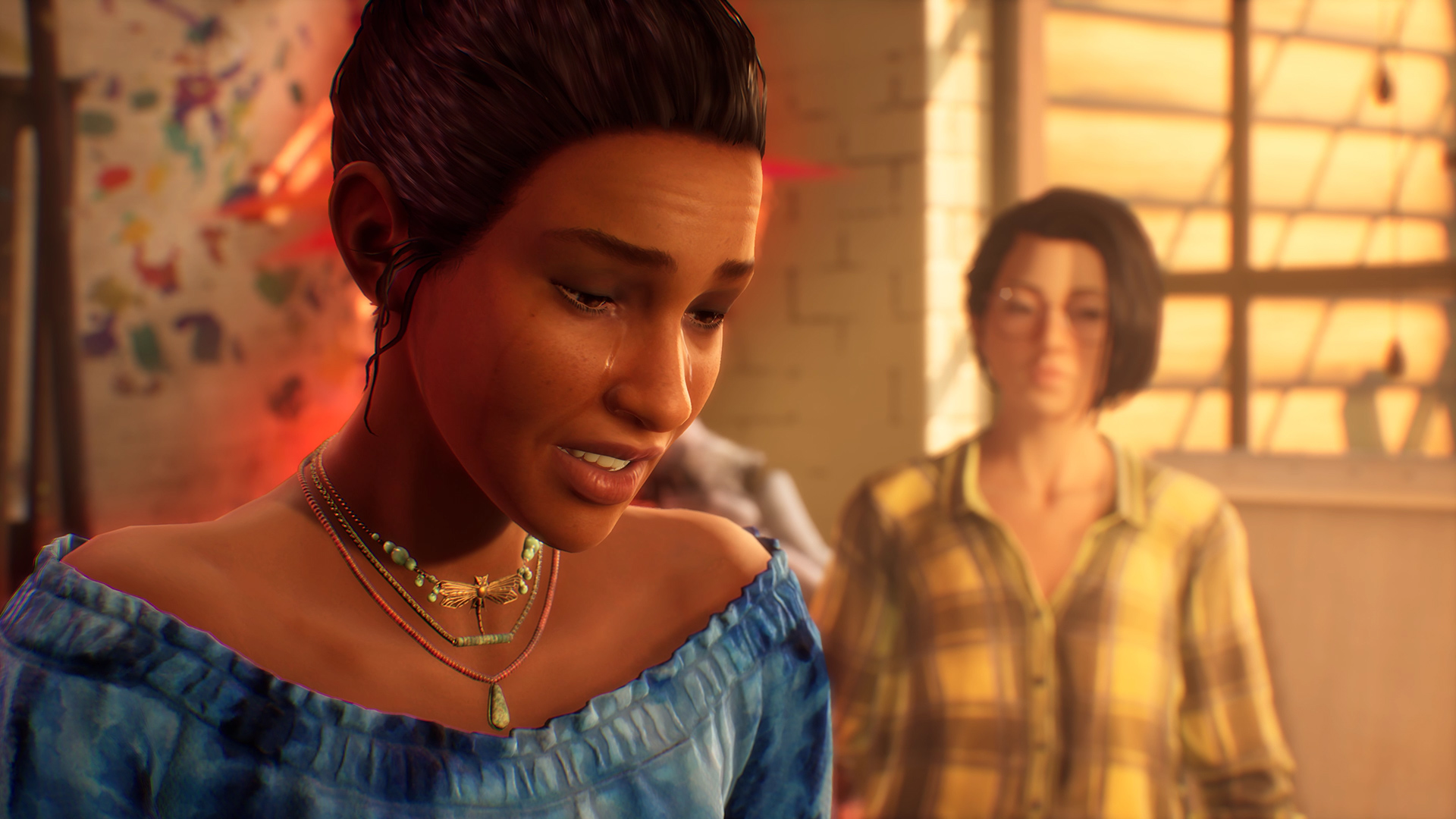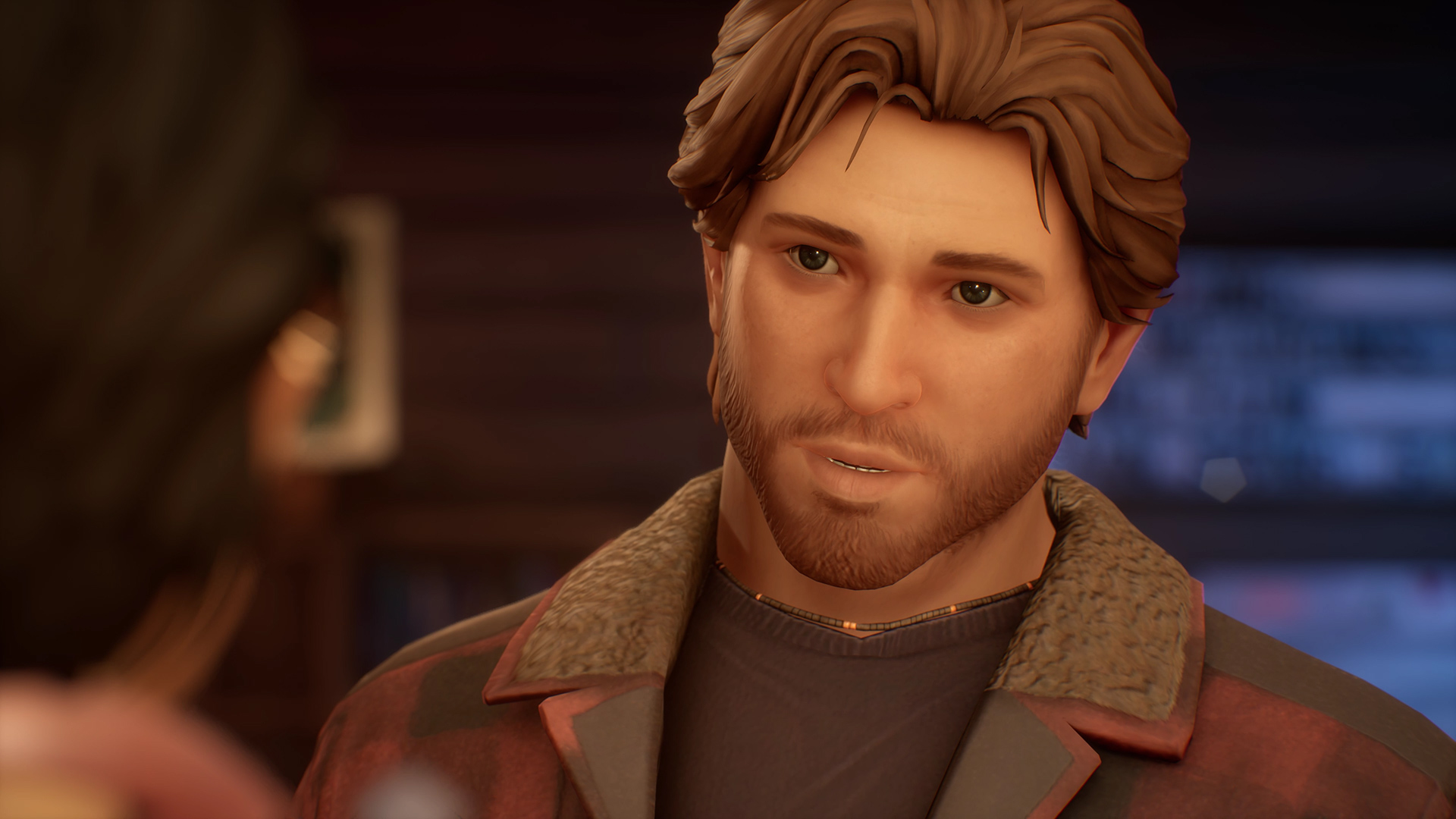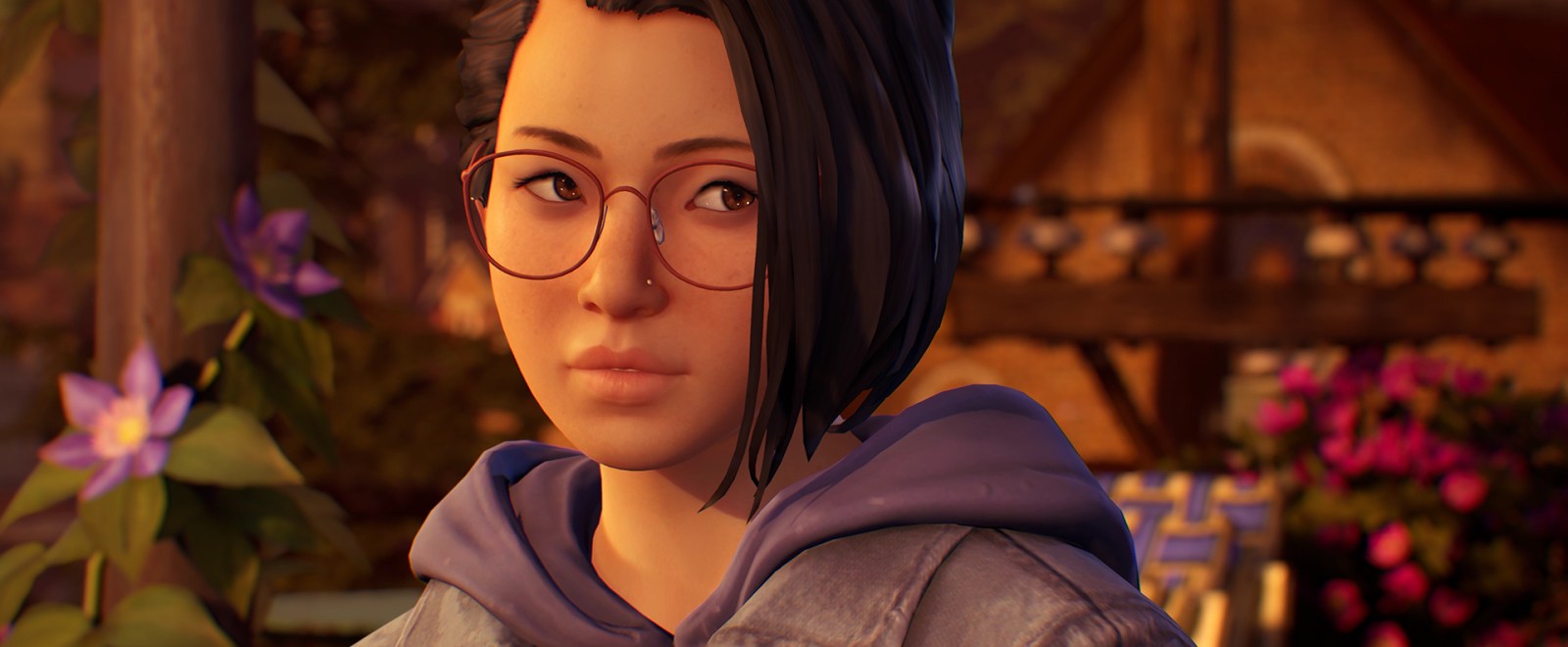When I was younger, I used to believe I played video games as a means of escape. I used to rationalize that, when I picked up a video game, it meant I was trading my own problems in for some that, maybe, just maybe, I could fix. However, I now realize that wasn’t quite right. You see, when you have a lovely, little neurodivergent brain, there really isn’t much of an escape or a time when you’re not extremely aware of how you’re feeling. On top of that, I always gravitated towards extremely emotional games that reminded me of the realities and hardships I faced. I now realize I turned to games not for escape, but for comfort.
To this day, I still believe comfort is the main reason I play much of what I play. I like to feel a bit less alone and wild inside, to feel the catharsis that follows the roll of the credits. So, when I got the opportunity to play Life is Strange: True Colors, I delighted in the thought that I was in for an extremely special experience from a studio that knows a thing or two about creating comforting games. I readied myself for tears and the bittersweet sensation of finding myself in bits and pieces of a stranger’s story, and I’m happy to say I walked away even more charmed by Dontnod’s latest entry in the Life is Strange series than I could have imagined.
Developed by Deck Nine, Life is Strange: True Colors follows Alex Chen, a brave and witty young woman fresh from the foster care system with a heart even bigger than her rap sheet. After a brief exit session with her therapist, Alex’s journey kicks off when she arrives in the small mountain town of Haven Springs, Colorado to meet up with her older brother Gabe after they were forced apart. Ever charming and kind, Gabe is quick to show Alex around town and introduce her to all his favorite people and places in an endearing attempt to assimilate her into his life as seamlessly as possible and make up for all the time they lost when they were separated.

After a few hours — and despite a rough encounter that leads to Alex telling Gabe that her extremely heightened empathy that borders on telepathy is a “superpower” — it seems as if Haven Springs is the place Alex has dreamt of being her whole life. A place where she can belong, be part of a family, and start a proper life away from prescriptions, prospective parents, and all the pain she still isn’t quite sure how to process. However, just as quickly as her life seemed to be improving, Alex’s dreams are shattered when Gabe is killed in a mining accident that seems anything but accidental. It then becomes Alex’s mission to figure out what really happened to her brother, as well as figure out what to live for now that he’s gone. While that already doesn’t seem like a particularly simple or straight-forward task, rest assured things only get more difficult and twisted for Alex with each passing day.
Much like in previous Life is Strange games, True Colors is an adventure game in which you interact with your environment and the characters who inhabit it to learn more about the story and progress. The game’s core mechanic comes in the shape of Alex’s enhanced empathy, which allows her to more closely examine characters or emotionally-imbued artifacts to better understand what they’re feeling. By doing this, you can unlock more dialog options, help nurture your relationships, and essentially solve light puzzles that grant you more insight into certain characters and the town of Haven Springs. While arguably not as complex as the abilities explored in the previous Life is Strange games, it does allow Alex to more deeply examine the game’s story, which is one of the series’ best and most emotional.
Like its predecessors, there’s no denying how lovely, endearing, and artsy True Colors is. Every inch of the wildflower-covered wilderness glows and every building you wander through feels as if stories have been etched on to its walls. The indie-alt soundtrack compliments nearly every moment you spend with the game, and all of these qualities mixed with the game’s heartfelt story and overarching sense of poignancy create a sweet, somber, and sun-soaked world you’ll enjoy spending time in. However, while all of what I’ve said thus far may have you thinking “okay, so it’s a Life is Strange game,” it’s also worth noting True Colors sets itself apart from the others by establishing some incredibly impressive new highs for the series, particularly with its characters and shift scope.

While the games are predominantly driven by the intensity of your closest relationships and larger-than-life stakes in previous Life is Strange entries, True Colors does away with these extremes and embraces a middle ground that is somehow both more comfortable and more compelling. Alex is not primarily defined by a singular romantic interest, nor an intense familial bond. While her relationships with Gabe, Steph, and Ryan are all thoughtful, moving, and tear-invoking at several points, they’re not an end-all-be-all for her. The story she finds herself wrapped up in doesn’t result in the apocalypse, or include religious cults and a showdown with the Federal Bureau of Investigation. Instead, everything is contained within a community you actively watch grow, making things simultaneously more intimate as well as more meaningful.
In True Colors, Alex comes to define herself through her involvement with the town of Haven Springs and her interactions with all of its dazzling and dynamic residents, from the lonesome romantic Duckie to creative wunderkind Ethan. The entire town is aglow with characters you not only are implored to get to know if you want to be embraced by the community, but ultimately want to know. They inhabit low-lit bars, dance under string lights in the Spring, sh*tpost on MyBlock, sculpt their grieving hearts into clay, and carefully trim the stems of sunflowers your brother would deliver to his former love. They graciously allow you insight into their lives, thoughts, and feelings, which are more raw and gripping than you might expect and, outside of the contents of chapter five, are the most compelling part of the game.
Beyond that, they also graciously offer you their friendship, which you can watch grow through the cute and clever text messages you exchange with them as the days pass and the seasons change. They are the tender hearts who make up a town that you both long to rescue and protect, making the game’s local stakes still significant. Without these characters and the game’s overall greater emphasis on community, both Alex and True Colors as a whole would be sorely lacking.

It’s worth mentioning that Life is Strange: True Colors also took a pretty major technological step that assisted in making these characters as resonant and charming as they are: full-body motion capture. Prior to True Colors, the series’ characters had a tendency to look a bit uncanny and vacant. However, thanks to True Colors‘ emphasis on correctly capturing expressions, the power of motion capture, and absolutely incredible casting and performances. Each character feels more alive than ever, with expressions that feel a lot less awkward, even when they’re delivering one of Dontnod’s signature awkward lines.
Oh yes, the awkward, hipster, and oh-so-slightly-try-hard lines are still there, ever-present in the Life is Strange series as they are in an episode of Gilmore Girls. If you’re the type who is endeared by them, you’ll be delighted to find them tucked around every other corner and might not cringe quite as much as I did when Alex broke out into a rendition of Radiohead’s “Creep.” However, they do seem a bit lessened in True Colors and I, for one, am not mad about it. Furthermore, when it comes to gameplay, Alex’s empathy powers are decidedly less exciting to play around with than telekinesis and time travel, making for a lot less puzzle-solving and “aha!” moments and more wandering around.
For better and for worse, the game is incredibly idealized. While the rose-tinted glasses are pleasant when you’re engaged in one of the game’s “zen” moments — say, an acoustic guitar plucking away as the river bubbles lens flares dance across your screen — it leads me to have some minor frustrations with how often game shied away from fully addressing larger issues. One example: The goal of your character quickly becomes to take down Typhon at any cost, but very little is actually said about how this will impact the mining town in which many of its residents work for Typhon. This is a situation we’ve seen unravel in real life with devastating consequences for one-industry towns, and it not being addressed in a meaningful way is troubling.

Despite the game’s focus on emotions and mental health, it often feels like trauma is laid bare only for us to understand a character rather than help them or address their feelings in a more significant way. Without diving into spoiler territory, when the game comes to an end, several traumatized characters seemingly adopt the mentality of “guess we’ll see if I’m okay” when the events we’ve seen play out should ideally lead to better discussions than that.
Despite any and all shortcomings, though, Life is Strange: True Colors is a game I suspect nearly all Life is Strange fans will adore, and even those who are hesitant towards the series might find a bit more to their liking. It feels absolutely no lesser than the titles that came before it, and makes meaningful changes to the series that elevate it to new heights, such as a cast of characters you actively want to be around and understand, a lovable protagonist, and a story will smaller stakes that pulls you in in only the way a small-town murder-mystery can. It offered me the catharsis I needed this year, and has quickly risen to take the place of the best game I’ve played in 2021. I have a hunch that if you give True Colors a try, you walk away a bit more comforted as well.

